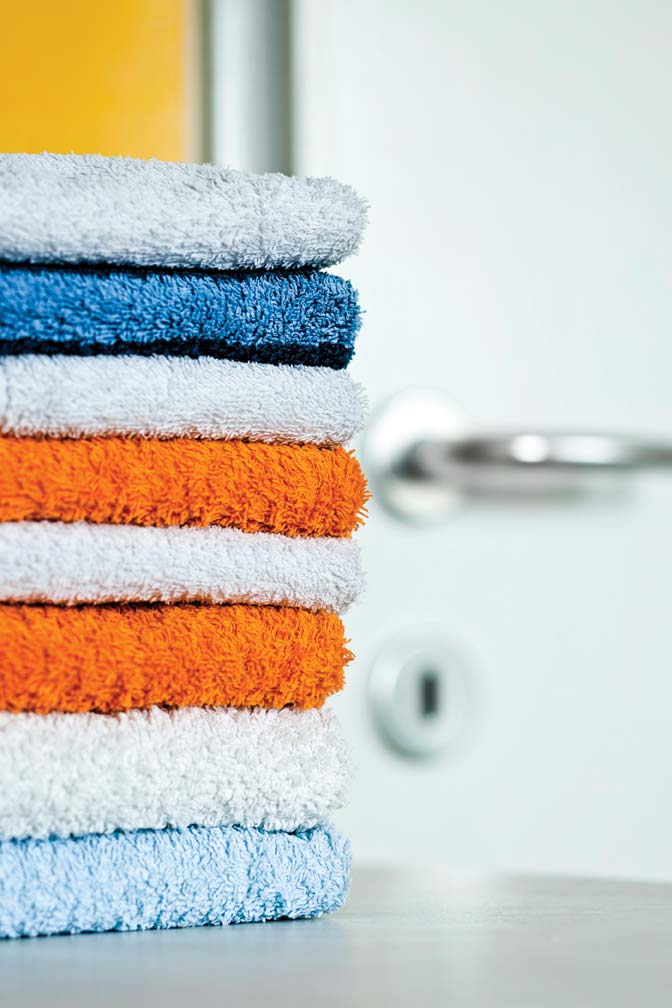Laundry & Long Term Care
Providers can improve the bottom line and boost customer satisfaction with some everyday laundry essentials.
Steve Kovacs
2/1/2012

While laundry might not be the first thing that comes to mind when thinking about the quality of care at a long term care facility, it does play an important role. How clean and fresh-smelling linens, towels, and garments are impacts the comfort level of patients, residents, and visitors.
Familiar Sights And Smells
Being in a long term care facility is typically not the first choice for most residents, so anything that can put their minds at ease and help them feel at home is incredibly important. Linens, towels, and garments washed in highly effective products that are also commonly used within the home can be comforting and reassuring to guests who may be dealing with serious health issues. In a recent poll of more than 500 professionals working in long term care facilities across the country, 85 percent of those surveyed agreed that residents who are surrounded by familiar sensory experiences, such as softness or fragrances, say they feel more comfortable and at home in their living environment.
Similarly, 82 percent of respondents reported that residents say they feel more at home in their facility when they use brands they know and trust.
Hygienic Laundering A Must
To achieve the proper level of hygiene in laundry procedures, it is imperative that cleaning professionals follow Centers for Disease Control and Prevention guidelines for laundry. Temperatures above 140º Fahrenheit are recommended for either the wash cycle and/or the dryer cycle.
As a supplement to the temperature level, chlorine bleach may be used to meet hygienic criteria.
However, when laundry is colored, bleach may not be appropriate, as the heat generated during the drying cycle can be used to achieve the necessary level of hygiene.
There are two major types of detergents—alkaline and near-neutral. Alkaline detergents have a high pH formulation, which is effective in removing body soils, grease, and the like; however, linens require multiple rinses or the use of an acid rinse to return the pH as close to neutral as possible.
Alkaline detergents are also corrosive, cause safety concerns in handling among employees, and cause linens to retain mineral encrustation, creating stiff, rough-feeling fabrics resulting in greater wear and tear, which leads to more frequent linen replacement needs and costs.
Cleaning products that are phosphate-free with a near-neutral pH formula extend linen life and make fabrics noticeably softer to the touch. With a near-neutral pH detergent, there is no need for pH correction through use of an acid, there’s less wear and tear on fabrics, and it is noncorrosive and safer for employees to handle.
Extending linen life also results in greater cost savings as linen replacement needs decrease.
The quality of care in a long term care facility is always the first priority, of course, but the need to manage costs is a reality as well. In one example, testing has shown that a leading detergent with a near-neutral pH helped reduce
operational costs by providing up to 55 percent savings in linen replacement costs due to worn fabrics.
Sustainable Cleaning
It is important to note that doing things right the first time reduces rework and repeated use of products for cleaning the same linens, which is important for having a sustainable laundry care program. In fact, source reduction is usually the most cost-effective approach to sustainable cleaning.
Facility managers purchasing laundry care products should also ensure that products do not contain phosphates, known carcinogens, or other reproductive toxins and that they meet the California Code of Regulations maximum allowable volatile organic compounds levels.

While it can be easily overlooked in the grand scheme of concerns managing a long term care facility, it’s worth taking time out to consider just how crucial a role clean, sanitary, and fresh-smelling laundry can play in the comfort level of residents and visitors.
At the same time, it’s also often a significant contributor to operational costs and impacts sustainability initiatives and worker safety.
For all of these reasons, facility managers must take a good, hard look at their on-premise laundry systems and work with their suppliers and product manufacturers to ensure the best results for their patients and guests.
Steve Kovacs is research and development section head at Procter & Gamble Professional, where he leads product development and customer understanding for cleaning product solutions provided for the hospitality; health care; and building, cleaning, and maintenance businesses.